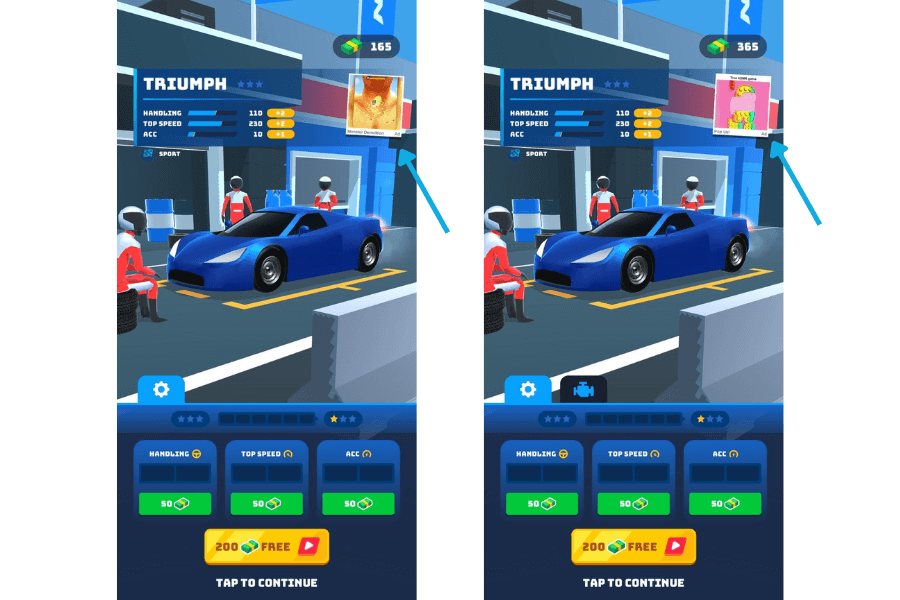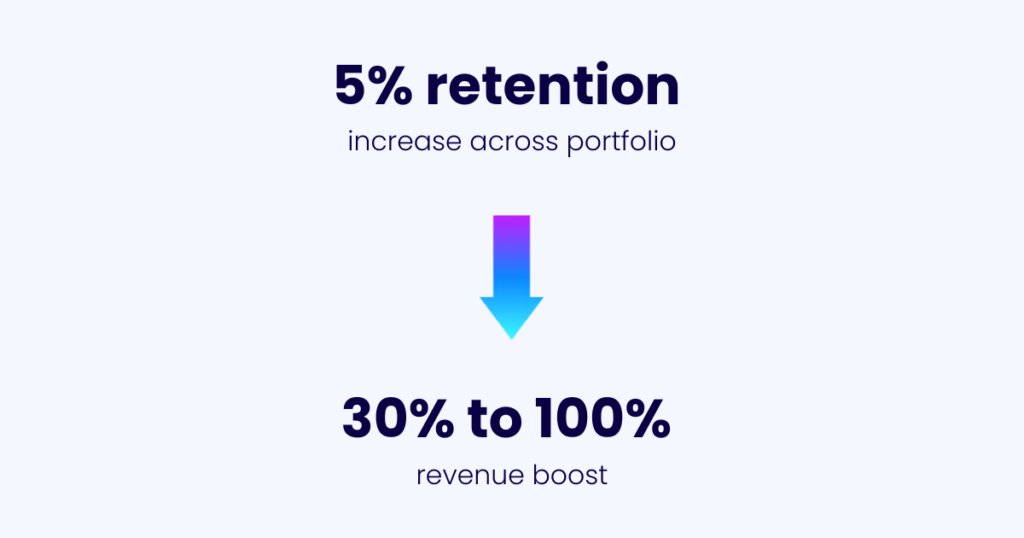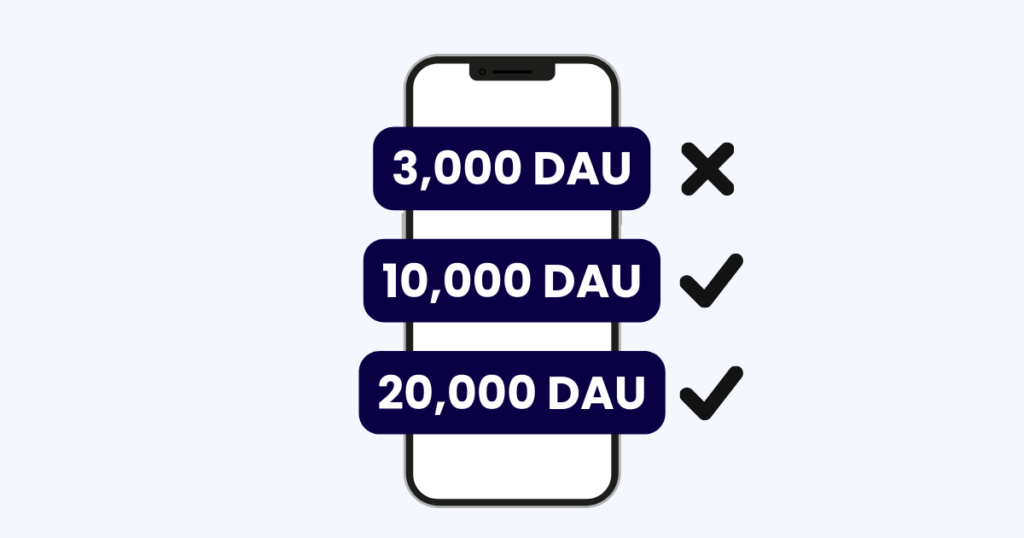Mobile game cross-promotion has been around since the early days of mobile gaming.
Not only is it still alive, but it is now more popular than ever before.
Ever since Apple introduced privacy restrictions, game marketers have been exploring different strategies to keep track of their users. In the light of this, cross-promotion has re-emerged as a valuable solution.
In this article, we’ll dive deep into mobile game cross-promotion to help you determine if it makes sense for your business.
Let’s start with the basics.
What is Mobile Game Cross-Promotion?
Mobile game cross-promotion is a strategy where developers leverage the user base of another game to promote their titles.
This strategy appears in two different forms:
- Promoting games in your own portfolio. Advertising your games to users who are already engaged with your other titles.
- Working with other game developers. Establishing partnerships with fellow game developers to mutually promote each other’s games.
While both of these strategies have their advantages, the first one is far more popular.
For this reason, we’ll focus on exploring the ins and outs of mobile game cross-promotion within your own portfolio.
Promoting Games in Your Portfolio: Your Options

In most cases, when someone says cross-promotion, they are referring to native placements. These are built-in ad placements strategically positioned within the game’s user interface (e.g. the home screen).
Native placements are the most popular form of cross-promotion for a few reasons. They are completely free of charge, and the developer has complete control over what they are showing.
The second option is cross-promoting through ad monetization.
Just like you would host ads for other games, you can also promote your own games via interstitial ads, banners, or rewarded video ads. This means buying your own supply via ad networks.

Doing so comes at a certain fee, but as a result, you get higher CPMs, increased engagement, and better ad-fill rates.
So, Who Can Benefit from Cross-Promotion?
There’s a common belief that mobile game cross-promotion is only for hyper-casual games.
Indeed, this is a standard practice in hyper-casual gaming.
Hyper-casual gamers are unfaithful. They tend to hop from one game to another.
Therefore, it only makes sense to try and keep them within your game portfolio instead of losing them to competitors.
However, cross-promotion can work well for other game genres too.
The thing is, the success of mobile game cross-promotion doesn’t depend on the genre as much as on the size of the developer’s portfolio. This strategy is particularly effective for developers with many games because they can move users between titles and help each game grow.
Moreover, cross-promotion works exceptionally well for studios with large player bases and games from the same category. For example, if a studio has multiple puzzle titles, it might be a good idea to try cross-promoting them.
Key Advantages Mobile Game Cross Promotion
Obviously, keeping players within your portfolio is the primary benefit of mobile game cross-promotion.
But, there’s more to it.
1. Cost-effectiveness
Tapping into existing user bases is either completely free of charge or comes at a low cost. As an alternative to traditional user acquisition, cross-promotion helps developers cut advertising costs.
2. Retention and Engagement Boost
Cross-promotion enhances user retention and engagement by exposing players to new games they might be interested in, keeping them immersed in their app ecosystem.
3. Maximizing Revenue and LTV at the Portfolio Level

Rather than fixating on the revenue and LTV of individual games, more and more developers are focusing on improving these metrics across their portfolios.
The reason?
If cross-promotion brings even a 5% increase in portfolio retention, this can lead to revenue increases ranging from 30% to 100% (Wappier).
4. Helping Newly Launched Games Grow
By tapping into the player bases of existing successful titles, cross-promotion can drive initial downloads and user engagement for new titles.
5. User-Level Targeting
Privacy restrictions killed many forms of user-level targeting.
However, cross-promotion remained unaffected.
It allows you to keep track of users across your game portfolio and use data from one game to target those most likely to enjoy another.
Mobile Game Cross Promotion Do’s and Don’ts
Thinking about getting started with cross-promotion?
Make sure you do it properly.
The biggest challenge of mobile game cross-promotion is reaching the right users at the right moment with the right game from your portfolio – all without harming your game monetization.
Sounds like a lot, huh?
Don’t let this intimidate you.
As long as you stick to tried-and-true strategies and steer clear of the most common developer pitfalls, things should work out for the best.
Do: Place Ads in Your Biggest Games

As great and effective as mobile game cross-promotion can be, it’s not famous for having high conversion rates. The average conversion rate for cross-promotion is only 1% to 2% (GameAnalytics).
What does this mean for you?
If a “mother” app hosting a cross-promotion placement has 3 thousand DAU (daily active users), you’ll only get about 30 daily installs for the promoted game.
This is neglectable.
As a rule of thumb, when selecting games to run cross-promotions in, aim for those with at least 10 to 20 thousand DAU.
Don’t: Target a Non-Relevant Audience
If you cross-promote with games that have completely different audiences, you probably won’t get the desired results.
Instead, you might end up with wasted resources and poor conversion rates.
For instance, promoting a match-3 design title in an RPG game is not a great idea. Match-3 games typically attract a mature female audience, while RPGs are more popular among young males.
Cross-promotion success depends on matching games appealing to the same player personas, fostering user retention and portfolio growth.
Do: Pay Close Attention to Player Churn
At some point, each user will churn from your game. This happens for all sorts of reasons – boredom, difficulty, poor user experience, lack of time to play, etc. Of course, you want to delay this as much as possible, but it inevitably happens.
When launching cross-promotion, it’s vital to monitor churn rates.
Why so?
The ideal moment to cross-promote is right before players leave your game. When you identify these moments, serve users ads to try and retain them within your portfolio.
Once you’ve successfully moved a player from one game to another, keep an eye on their behavior.
As users shift between your games, analyze how it impacts your overall lifetime values. Mobile game cross-promotion should positively influence your revenue and engagement metrics, not just new installs.
Don’t: Cross Promote to High-Value Players
Besides knowing when and where to cross-promote, it’s equally important to know which users these ads should and shouldn’t reach.
First, exclude loyal, paying users with high LTVs. These users are precious to your game, and it doesn’t make sense to move them elsewhere. While they might behave similarly in another game, it’s a risk not worth taking.
Does this mean you should be targeting low-value users?
Yes, but not exclusively.
Segment users and understand what each group can bring. Low-value users might install your other games but are unlikely to start spending. Therefore, it’s also important to target users who fall in between – those open to spending but not so loyal that you’d risk losing a valuable user.
Mobile Game Cross-Promotion: Final Thoughts
In a world with more and more privacy restrictions for mobile advertising, the popularity of alternative advertising strategies will continue to rise.
Mobile Game cross-promotion is just one of the current mobile advertising trends.
Another strategy that is experiencing a resurgence in popularity is offerwall advertising.
Did you know that offerwalls users have up to 5x higher retention rates than non-offerwall users? As a result, developers get a significant boost in KPIs like ROAS and session duration.
Find out more about the benefits of offerwall ads – read our ultimate offerwall guide!







